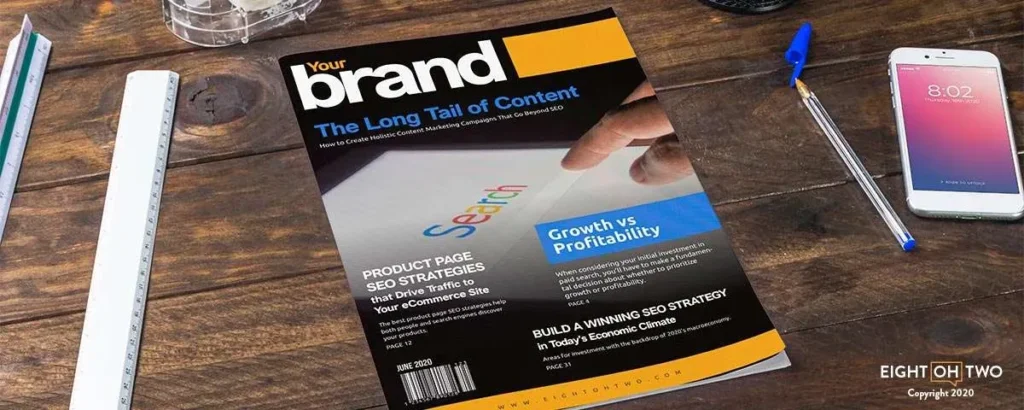Search engine optimization (SEO) for a new website is a challenge: Poor page ranks, inbound links, and mobile response are a few of the possible shortcomings. All of these tasks may seem overwhelming, even for seasoned marketers like us, but remember that SEO is about making incremental changes.
I like to explain SEO like it’s a team sport. The team (your brand) has an end goal—winning (aka conversions), but it takes many different players (links, keywords, meta tags,) all working together to achieve that goal. Success won’t happen immediately because it takes time for the team to jive, and even if it takes all season, the individual wins add up and your position in the standings (rankings) gets harder and harder to beat.
While these small “wins” might sound too simple, a website without rankings has a lot of opportunities to improve organic search traffic. We’ve identified some simple steps you can take to start building the credibility—and visibility—of your website.
Set Realistic SEO Goals
Creating a list of goals is the first step anyone starting SEO for a website should take. These need to be specific targets that align with the company’s objectives. Examples include increasing revenue by 5% in 12 months or improving rankings to get four category pages to the top of the fold by January.
Avoid choosing arbitrary goals and instead give each one you set the SMART (Specific, Measurable, Achievable, Relevant, and Timely) sniff-test. If it’s a practical SEO goal, you should be able to plug it into the acronym below. Just make sure your timelines don’t call for overnight success—SEO is a journey.
I’ve done a SMART breakdown of a goal below so you can see how this works.
Goal: Increase organic traffic by 15% for XYZ category page in six months.
Specific: For a goal to be specific, it needs to state the desired outcome, which in this case is to increase organic traffic for the XYZ category page; generic goals, like “higher sales in six months” or “more traffic” aren’t specific.
Measurable: Making the specific goal measurable means adding an exact number, which is where the percentage comes in. Words like “more” and “higher” need a quantifier to be measurable. You’ll also need the proper reporting tools to create benchmarks and to track web traffic and revenue.
Actionable and Achievable: 15% is a reasonable growth target, unlike an inflated number, like 75%, and it is achievable through on-page optimization tactics.
Relevant: This step is a double-check that the work your team will dive into—on-page optimization—is related to the company’s objectives to increase traffic, and as a result, conversions. Since on-page SEO captures qualified customers likely to visit or buy, the goal is relevant.
Timely: A time frame must have a set end date, like the six months in our example, to drive progress and help the team develop milestones.
Once your goals are set, it’s time to get to work.
Gain Rankings With Keywords
Websites new to performance marketing have ground to cover, but catching up isn’t impossible with the right tactics and team. Identifying strategic keywords for SEO is the place to start. Keyword improvements are fairly easy to implement and add value to on-page SEO, so you get a lot of bang for your buck, especially compared to technical updates that may require outside resources.
Since you know your audience better than anyone, start making a list of search terms that describe your products or services. Think about the problems your products solve and what questions or phrases customers might type into the search bar. Try a variety of software-free SEO tactics to find additional keywords. I recommend making your list with more words or phrases than you think you’ll need so you can filter out those with no volume later.
Capture Audiences With Low-Competition Keywords
Plug the phrases and words you brainstormed into a keyword research tool to see how they rank competitively. Don’t discount the value of low-competition keywords. New and under-performing websites without the traction to go against the heavyweights can get closer to their goals by targeting low-competition keywords. Though a keyword with 1,000 monthly searches seems enticing, your goal isn’t to outrank established websites, it is to drive traffic, and low-competition keywords can certainly do that. If you add 5 or 10 words to your site that each bring in 40-ish searches per month, you could gain 200 to 400 more monthly leads, without going head-to-head with juggernauts.
This doesn’t mean a shoe store shouldn’t include highly competitive terms, like ‘running shoes’ or ‘casual sneakers’ on their website; it means the store should also consider using variations, including ‘sports shoes’ and ‘everyday shoes’ on optimized category landing pages, in product descriptions, and in relevant, informative blog posts to gain an in with the audience searching for these keywords.
Any uptick in traffic and conversions on new and low-performing sites can help you reach your objectives. Plus, the resulting customer reviews, engagement, and shares from a new audience do wonders for an unknown business’ credibility, which Google and other search engines value.

If you’re launching a new basketball sneaker brand, good luck ranking against Nike and Adidas early on. But you could gain traction by targeting low-competition keywords like “basketball sneakers for flat feet.” Maybe you don’t offer those, but these are just the first three in a list of thousands you could target, without swimming against the heavy current of the big names.
Take Advantage of Keyword and Content Gaps
With a keyword analysis tool or an audit by a digital marketing agency, you can see how your website ranks against your competitors’ and identify content gaps and opportunities. Creating worthwhile content to fill these holes, such as a topical article or expanded product descriptions, helps your site qualify for more search queries that your competitors won’t.

This is a keyword gap analysis from SEMRush comparing the home sites for Adidas and Nike. Surprisingly, these two sites don’t overlap as much as I expected. Is this what you’d expect? SEMRush gives us some ideas for keyword opportunities on the left of the graphic. Some of these may be applicable, while others, like terms exclusive to the competitor brand we can throw away. The tool gives us more keyword comparisons at the bottom so you can see shared keywords, terms you’re using that your competitor isn’t, and where there is untapped potential. Filter by volume and difficulty to find keywords that are worth tossing your hat into the ring for.
SEO Tips for Building a New Site’s Credibility
A new business needs to earn the trust of their target audience and they need to win over Google and alternative search engines. If your website makes searchers feel uneasy or frustrated, they likely won’t stay long; if your site’s information is disorganized or missing, Google can’t decipher what each page is about and won’t serve it on the SERPs.
Review these elements of your site to identify areas you could improve to better gain the trust of potential customers and clients (and search engines):
- Design: Introduce your brand with a well-designed site that features authentic images and original content that load fast.
- Intuitive Navigation and Organization: Valuable content and an easy-to-use site are a powerful pair that can quickly transform blog traffic into customers; review headings and tags to make sure they’re organized in a way that search engines understand.
- Trust Seals and Certifications: Display these clearly to bolster internet searchers’ confidence in your business.
- Social Proof: Legitimize your products or services with testimonials, reviews, and case studies.
- Feature Logos of Clients and Partners: Make it easy for visitors to get a sense of your expertise by displaying logos of existing or former clients.
- Provide Contact Information: Don’t bury the lede on who you are or what you offer—include an About Us section and display contact information so customers don’t feel you have something to hide; addresses also boost your local SEO, especially for private browsing.
Ready to set goals and get started? Contact us for a site audit today. With years of experience working with new and established brands, we’re practiced at putting any website on a course for growth.






